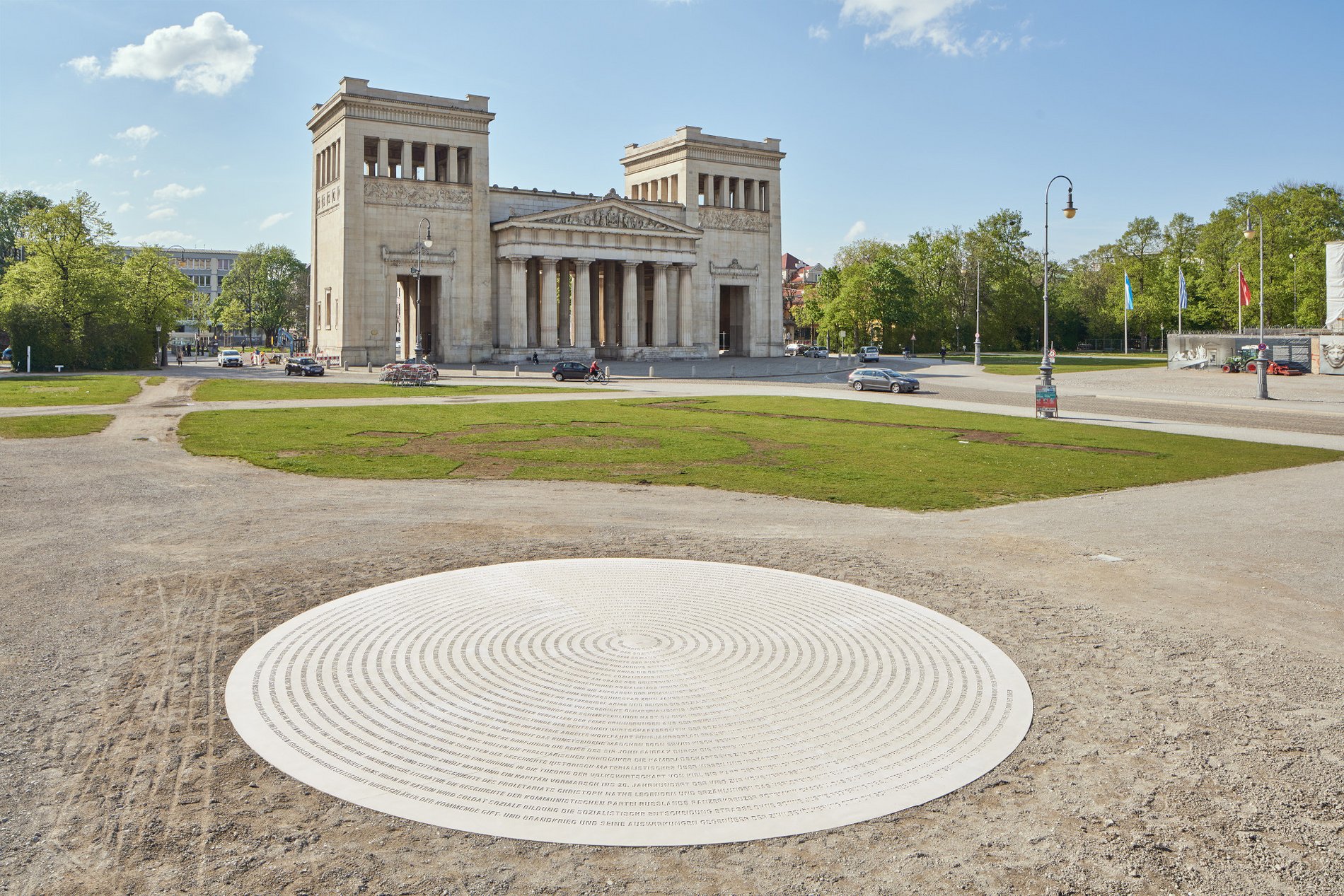On Thursday, May 6, 2021, the artwork The Blacklist / Die Schwarze Liste by Arnold Dreyblatt commemorating the book-burnings of 1933 was inaugurated on the central area of gravel in front of the Staatliche Antikensammlungen—the antiquities museum—on Munich’s Königsplatz. Owing to the pandemic, the inauguration was not a public event. Bavari-an Prime Minister Markus Söder, Mayor of Munich Dieter Reiter, President of the Jewish Community Charlotte Knobloch, Director of Culture for the City of Munich Anton Biebl, and Director of the Munich Documentation Center for the History of National Socialism Mirjam Zadoff attended the inauguration of the memorial together with the artist Arnold Dreyblatt.
The book-burnings in May 1933 were initiated by the antisemitic German Student Union. What was termed a “campaign against the un-German spirit” took place in many German cities and formed a prelude to the systematic removal of any literature that the Nazis disapproved of from libraries, bookshops, and the literary industry. In Munich there were two book-burnings on Königsplatz, on May 6 and May 10.
The Munich City council took the decision to commemorate the Nazi book-burnings in public space in 2016. Arnold Dreyblatt’s work was the winning entry in an international competition. The title of the artwork The Blacklist / Die Schwarze Liste refers to the blacklists of undesirable literature compiled by the Berlin librarian Wolfgang Herrmann in spring 1933, which served as a guideline for the organizers of the book-burnings. The walkable circular artwork consists of a spiral of book titles by 310 authors disparaged and ostracized by the Nazi regime and its supporters. The memorial encourages a confrontation with Nazi ideology and at the same time arouses an interest in this proscribed cultural heritage itself.


